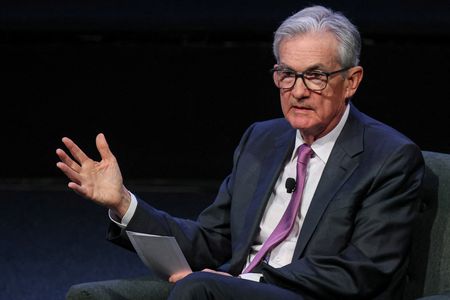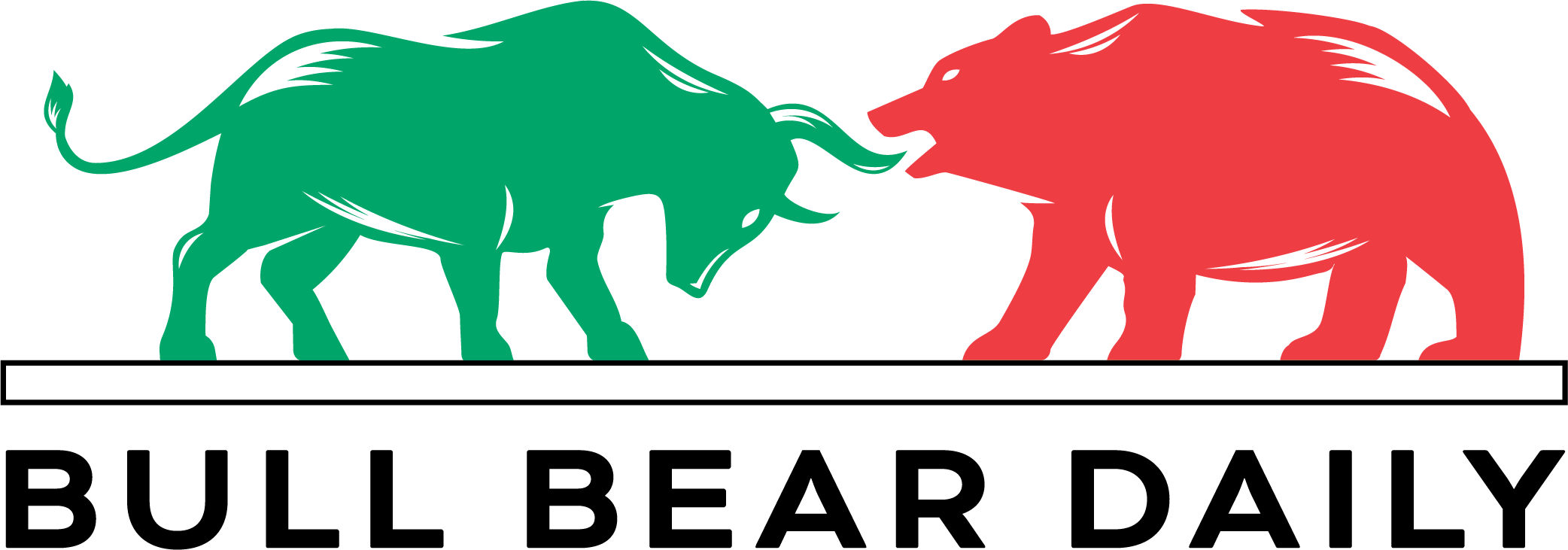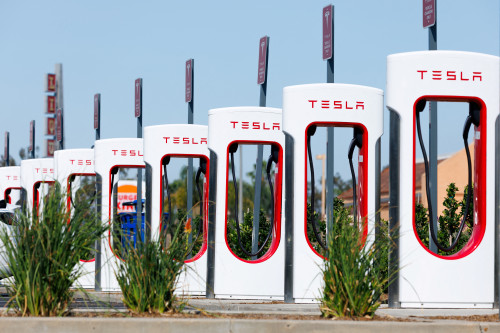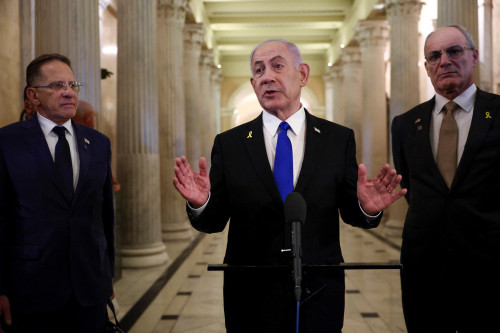
FILE PHOTO: Federal Reserve Chairman Jerome Powell speaks during a meeting of the Economic Club of New York in New York
(Reuters) -Federal Reserve policymakers have telegraphed no change to the current 5.25%-5.50% target range for short-term interest rates at their two-day meeting starting Tuesday.
But they will have a robust debate about the U.S. outlook and what policy response might be required at upcoming meetings, given recent data that includes both surprisingly strong growth in jobs and the economy and a rise in longer-term borrowing costs expected to slow both down.
Here are a few words and phrases to watch for in the Fed’s post-meeting statement on Wednesday and in Fed Chair Jerome Powell’s news conference, and what they might suggest for the future path of interest rates.
EXTENT OF ADDITIONAL FIRMING
Inflation by the Fed’s preferred gauge was 3.4% in September, down by more than half from last summer’s peak but still well above the U.S. central bank’s 2% goal.
The post-meeting statement is widely expected to signal further policy tightening is still very much on the table, as policymakers go about “determining the extent of additional policy firming that may be appropriate” to return inflation to target.
Any change to that phrase could signal Fed policymakers feel they are closer than before to reaching a sufficiently restrictive stance of monetary policy.
PROCEED CAREFULLY
In his news conference following the Fed’s September decision to hold the policy rate steady, Powell said the Fed would proceed or move “carefully” 11 separate times.
The adverb is meant to convey a central bank no longer barreling ahead with ever-tighter policy, as it did last year when it drove the policy rate up in chunks of as much as 75-basis-points at a time.
The verb – “proceed” or “move” – shows there is likely still further action ahead, and that the decision to extend the policy pause does not imply the pause is permanent.
In remarks earlier this month Powell repeated the “proceeding carefully” mantra but also used the word “patience” to describe the Fed’s approach to policy adjustments; Fed policymakers in the past have used that word to signal an extended hold on rates.
FAIRLY CLOSE, LONG WAY TO GO
Powell has in recent remarks said the Fed policy rate is “fairly close” to the level needed to bring inflation down to 2% over the medium term, but that the process of getting inflation down has a “long way” to go.
Look for Powell to repeat both phrases or use very similar words to signal that another rate hike is still an option and that interest-rate cuts are nowhere in the foreseeable future.
TERM PREMIUM
Fed policymakers have in recent weeks cited the rise in longer-term borrowing costs and the consequent tightening of financial conditions as reasons for holding off on any further increase in short-term interest rates.
To the extent Powell attributes the rise to “term premium” – market shorthand for the extra compensation investors demand for taking on the risk of holding debt for longer – it’s a suggestion he believes that the rise in longer-term rates leaves less for the Fed itself to do.
SOFTENING LABOR MARKET, SOFT LANDING
Powell has consistently said he believes that bringing inflation down will require a period of “below-trend” growth – by which he means GDP growth of less than 1.8%, but more than 0% – and a “softening” of labor market conditions, by which he means a rise in the unemployment rate, now at 3.8%, by probably a few tenths of a percentage point.
Managing such a scenario would constitute a “soft landing,” with the economy slowing but not crashing, and the labor market easing but not collapsing. Powell has said he believes a soft landing is possible, and desirable, but has emphasized that bringing inflation down is the Fed’s first priority.
BIAS AND BALANCE OF RISKS
In explaining the Fed’s current policy stance, analysts often say it has a hawkish, or tightening, “bias” – a word meant to suggest that the Fed is leaning toward another rate hike and not sitting squarely on the fence.
That’s not a word that Powell himself uses, although he and others sometimes describe their views on the “balance” of risks between doing too little with rate hikes and allowing inflation to stay high, and doing too much and risking unnecessary harm to the economy. A few of Powell’s colleagues have said those risks have recently become roughly balanced; Powell has not.
(Reporting by Ann Saphir; Editing by Andrea Ricci)





